Ayoob: Modified Weaver Stance for Pistol Shooting
March 5th, 2022
6 minute read
Editor’s Note: This article is about the Modified Weaver stance also known as the Chapman stance. It is the third in a four-part series by Massad Ayoob on the most common two-handed shooting stances. You can find his article on the Weaver shooting stance here and his Isosceles shooting stance article here.
In part one of this four-part series, we explored the value of knowing multiple stances and incorporating them into one’s shooting repertoire. In part two, we focused on the Classic Weaver stance, inspired by Jack Weaver and popularized by Jeff Cooper. Let’s look now at modifications of the latter.
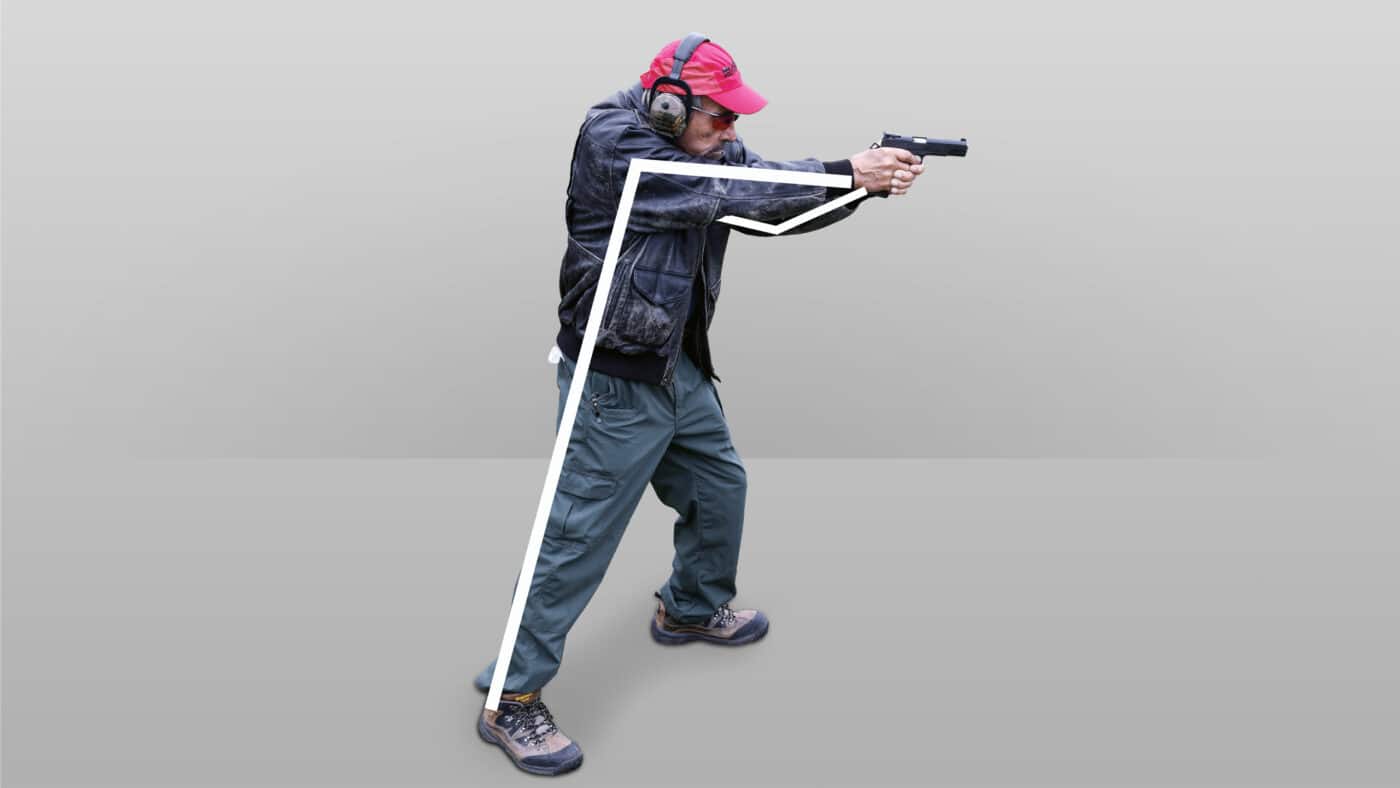
It sometimes seemed that everyone and his brother had come up with their own modification of the Weaver stance, but by far the most popular and successful “Modified Weaver” was that of Ray Chapman. A friend and contemporary of Jack Weaver and Jeff Cooper, Chapman well understood the isometric push-pull stance, which the one had inspired and the other had promulgated. However, Chapman found it stronger to lock his gun arm, rather than bend it at the elbow. On the surface, this appeared to be a small change, but it altered the kinesiology considerably.
A Semantic Issue
In what many of us called simply the Chapman stance, the gun arm was locked rigidly from shoulder through elbow through wrist, with the limb absolutely straight. Ray described it as a “Modified Weaver” stance. This created something of a semantic argument. Col. Cooper, the high priest of the Weaver stance and the man most responsible for promulgating it, said the essence of the Weaver was its isometric push-pull.
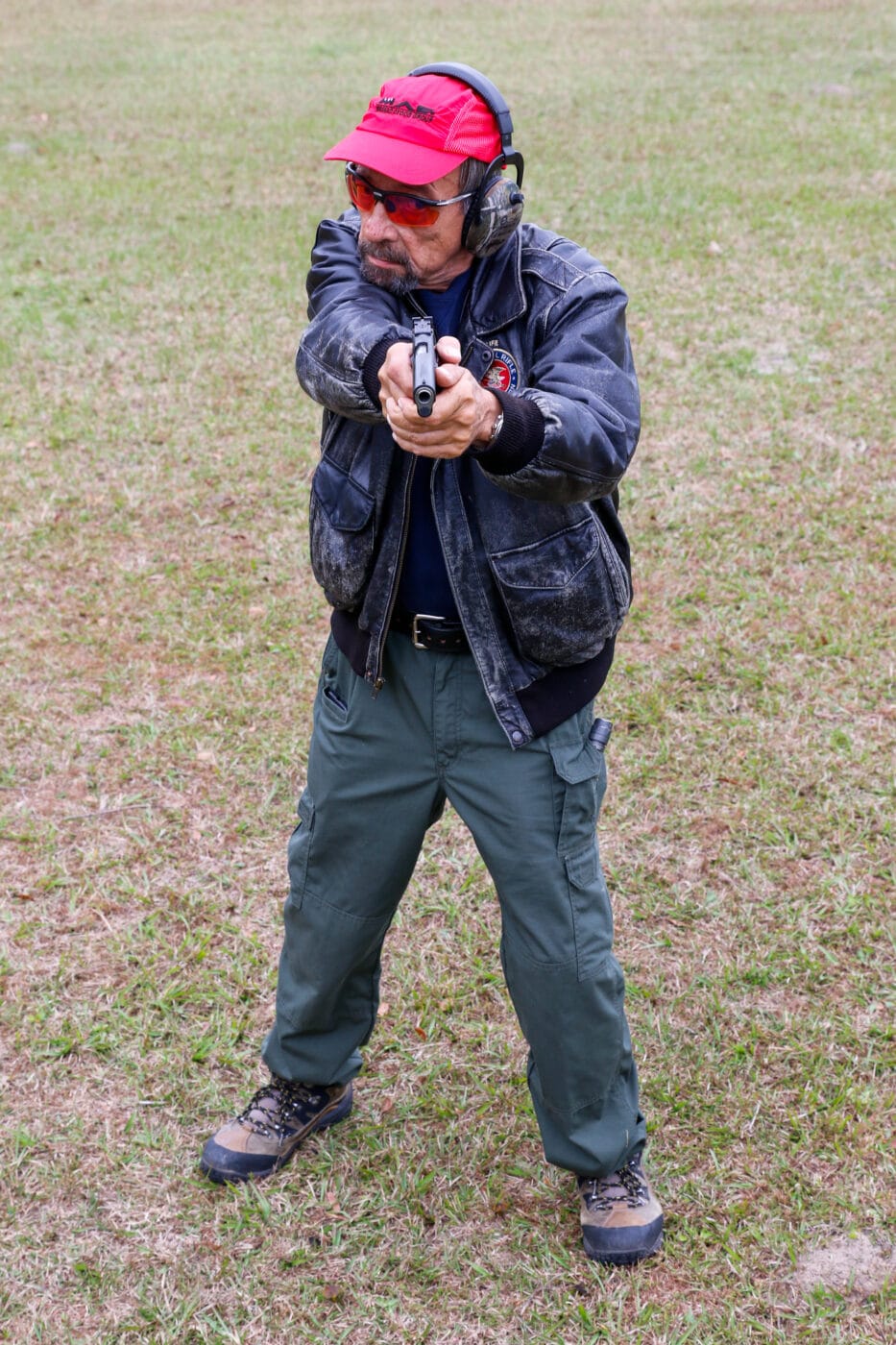
In Ray’s interpretation, the locked arm was hyper-extended and by definition could no longer push. The support hand did indeed pull the whole locked gun arm straight back into the shoulder socket, but the stance was now employing dynamic tension rather than isometric.
Why, then, call it a Modified Weaver? Because Ray Chapman called it that. The man who comes up with the technique, wins with it and popularizes it is the one who gets to name it, and those of us who inherit the benefit of that development get to pay appropriate homage.
Chapman Stance Details
I had the good fortune to learn the subtleties of the Chapman stance at the feet of the master. I met Ray in 1978 at the IPSC National Championships north of Los Angeles, and two years later began studying with him at his Chapman Academy of Practical Shooting in Columbia, Missouri. In 1981, I started teaching with him at Chapman Academy (and Chapman Academy South in Okeechobee, Florida) and for a few years, we taught Advanced Officer Survival together around the country under the auspices of the Police Marksman Association.
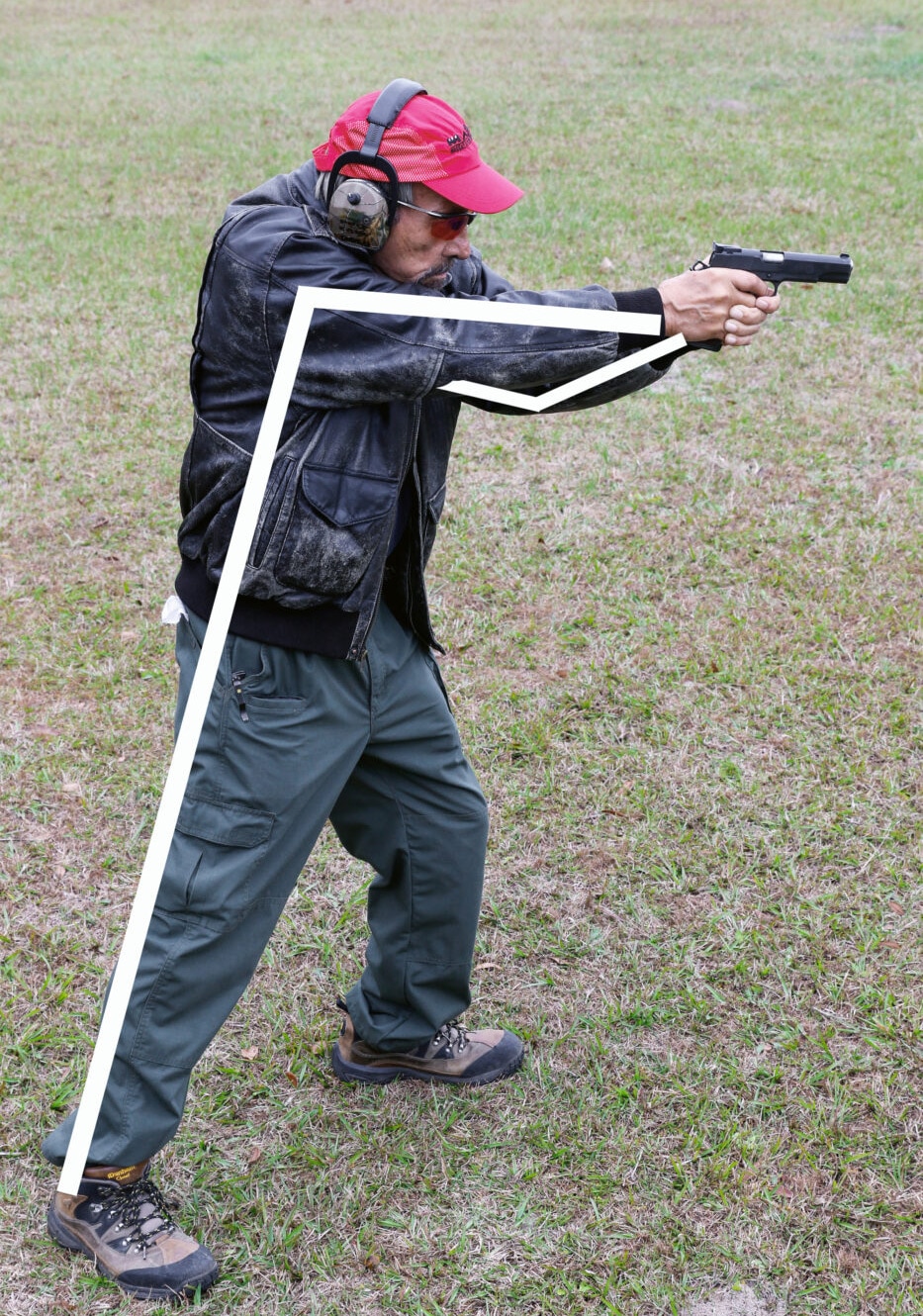
Over the years, at least a couple of other shooting academies have taught the Modified Weaver stance with the gun arm properly locked, but the shoulder rocked back. This may come from their instructors seeing very early pictures of Chapman shooting that way, but by the time I met him he had moved forward in more ways than one. Ray emphasized getting body weight forward into the gun. “Get sixty percent of your body weight onto your forward leg,” he told students, and he was constantly, gently, pushing their shoulders forward on the firing line. He wanted the shoulder at least an inch forward of the hip.
The reason was that Chapman had been an engineer before he became a shooting champion, and he knew that the locked gun arm became a lever pivoting on the fulcrum of the shoulder if body weight wasn’t behind it.
Chapman taught a boxer’s stance, with the gun hand side leg well back from the forward leg. Where the Classic Weaver was generally taught with the recommendation of “feet shoulder width apart,” Ray didn’t mind if your feet were slightly farther apart than that.
Proof of Concept
In 1975 in Zurich, Switzerland, Ray Chapman became the first World Champion of the Combat Pistol, shooting with his namesake stance. He went on to become one of the all-time great coaches in practical handgun shooting. Many of his graduates carried on his legacy.
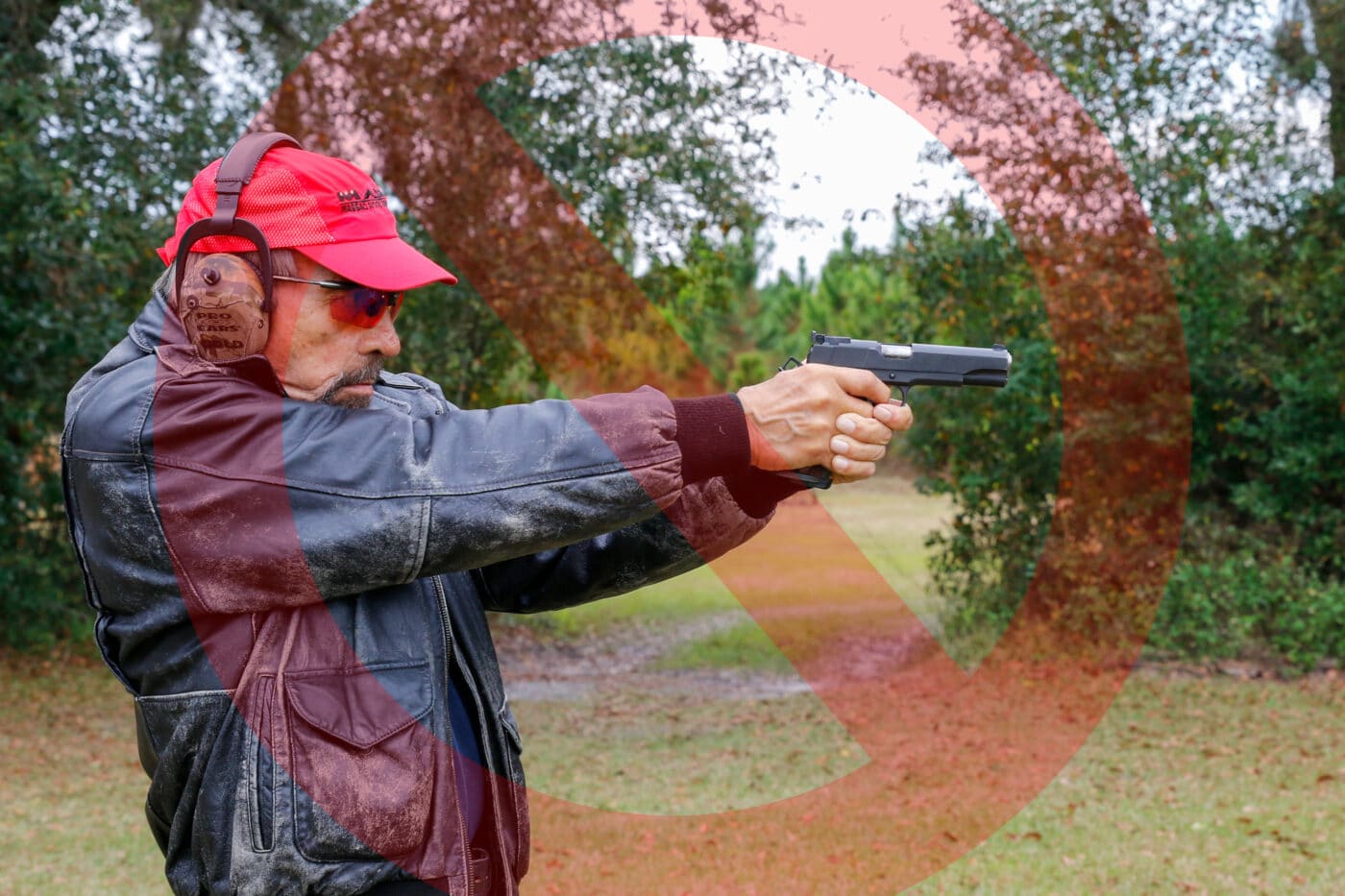
One of those was Mike Plaxco, a world-class competitor and a fine instructor in his own right. Whenever I saw Mike shoot, it was from a Chapman stance, and when I saw him teach, he always gave Ray credit for that. Plaxco, in the 1980s, became the first person to win the Steel Challenge – the World Speed Shooting Championship – and the U.S. National IPSC Championships, and the big Second Chance money shoot, all in the same year. The Chapman modification of the Weaver seemed to be his default stance throughout.
Another who put that stance to long-term successful use was Tom Campbell. A valued member of the U.S. IPSC Team, Tom shot from an aggressively forward-leaning Chapman stance.
In the mid-1980s at the Ordnance Expo in Los Angeles, run by Dick Newell who at that time was head of firearms training for LAPD, I caught Jeff Cooper’s lecture on the development of the Modern Technique of the Pistol. He explained the difference between the original isometric Weaver stance he personally preferred, and Chapman’s variation, both of which he taught at his school, Gunsite. Jeff commented that he thought Chapman’s might just be the better of the two.
Perks and Quirks of the Modified Weaver
Every stance has strengths and weaknesses. Advantages to the modified Weaver stance include the following:
Commonality with long guns: From the beginning, Ray wanted to ‘turn the gun arm into a rifle stock,” with the forward (support) hand pulling the whole locked firing arm tight into the shoulder socket. Depending on their build, some shooters could even “cheek their bicep” the way they would cheek a rifle stock.
Adapts more easily to the cross-dominant shooter than the Classic Weaver: To coordinate a left master eye with a dominant right hand or vice-versa, one simply keeps the head straight up on a swivel and turns the chin to the bicep of the locked-out gun arm for a felt index. This technique won’t work with the Weaver of Jack and Jeff because the bent-at-the-elbow gun arm is too far from the felt index of the jaw.
Works better for the armored shooter than the original Weaver: Try it yourself, in front of a mirror. When your gun arm extends straight out toward the target (your reflection in this example) it brings that side of the torso more forward and square to the target. This reduces the vulnerable open area in the armpit and side area and puts more Kevlar between your internal organs and the firing angle of a facing opponent.
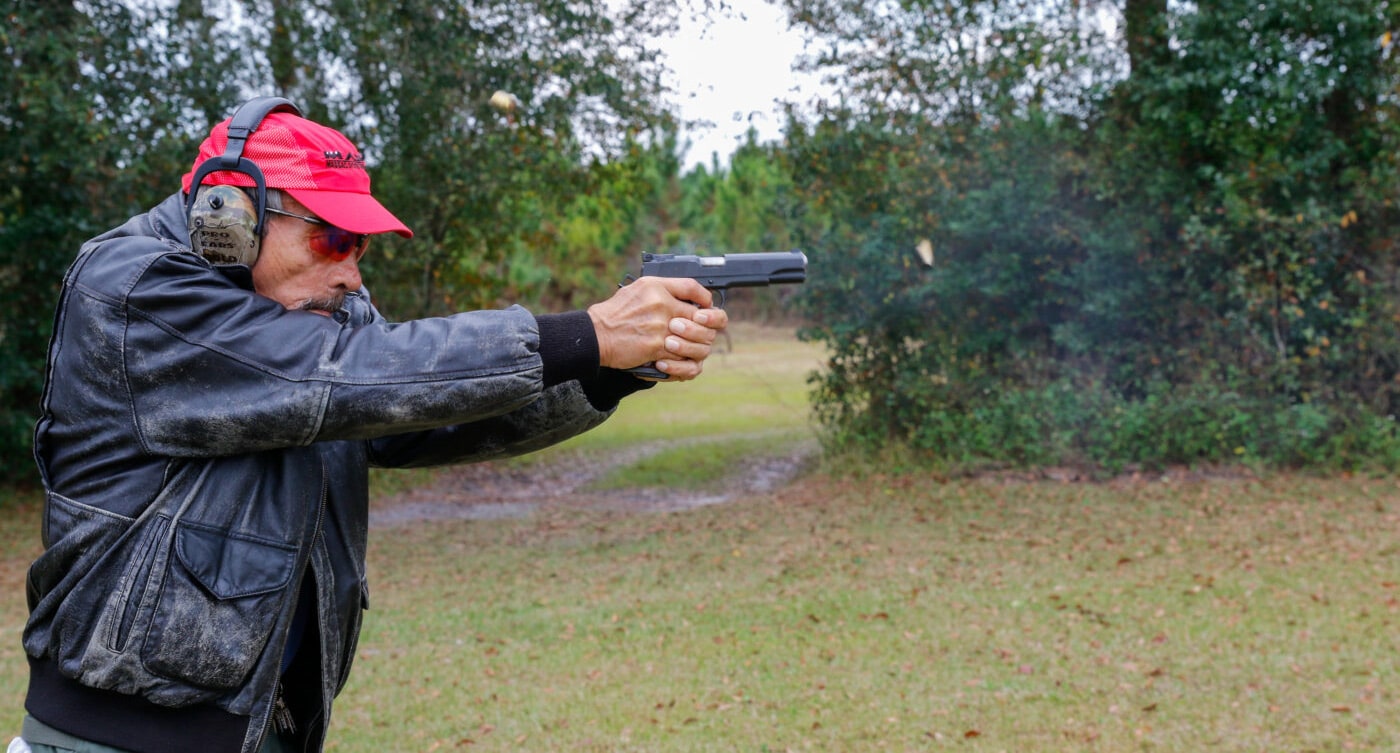
Downsides?
There are downsides to any technique. With this one, those include:
Doesn’t reach its full value if the shoulders are too far back: Remember that lever effect of the locked arm, and the pivot point of the shoulder joint.
Does not maximize body armor coverage vis-à-vis a facing opponent’s firing angle as well as the Isosceles stance: Ray himself recognized this, and in the Advanced Officer Survival lectures recommended the Isosceles to armor-wearing officers over his own namesake technique for exactly this reason. In fact, he often called the Isosceles “the police stance.”
Can be sub-optimal or even impossible for the shooter with an elbow compromised by injury, arthritis, etc.: That situation is one of those cases where the Classic Weaver stance makes huge sense.
Summary
In over 40 years of teaching this stance along with Classic Weaver and Isosceles, I’ve found that a large number of students wind up with Chapman as their default two-hand standing position for pistol shooting. In popularity, it may be eclipsed only by the currently popular Isosceles stance, with which we’ll conclude this series in part four.
Editor’s Note: Please be sure to check out The Armory Life Forum, where you can comment about our daily articles, as well as just talk guns and gear. Click the “Go To Forum Thread” link below to jump in!
Join the Discussion
Continue Reading
Did you enjoy this article?

 122
122






